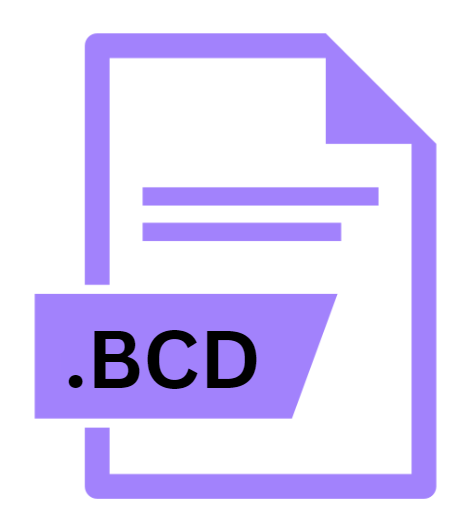.BCD File Extension

Windows Boot Configuration Data File
| Developer | Microsoft |
| Popularity | |
| Category | System Files |
| Format | .BCD |
| Cross Platform | Update Soon |
What is an BCD file?
BCD files are integral to the Windows operating system, particularly in its booting process. They store critical configuration data required for the system to start up correctly.
This data includes information about installed operating systems, boot parameters, boot menu options, and various settings related to system startup.
More Information.
The transition from Boot.ini to BCD marked a significant evolution in Windows boot management. Boot.ini was a plain text file that contained basic boot configuration settings.
It lacked the flexibility and robustness required for modern computing environments. BCD, on the other hand, introduced a structured database format that could accommodate more complex boot configurations, including support for multiple operating systems and advanced boot options.
Origin Of This File.
The concept of boot configuration data traces back to the introduction of Windows Vista.
Before Vista, Windows used the Boot.ini file for boot configuration, but with the introduction of Vista, Microsoft replaced it with the more advanced BCD system. Since then, BCD files have been a fundamental component of Windows booting.
File Structure Technical Specification.
BCD files are binary files, which means they are not human-readable like plain text files. They consist of a structured database that stores boot configuration data in a hierarchical format.
This hierarchical structure comprises elements such as objects, elements, and attributes, organized into a tree-like layout.
The BCD database contains various types of objects, including:
- Boot Manager: Controls the boot process and presents the boot menu.
- Boot Loader: Represents individual operating systems or bootable applications.
- Device: Specifies the hardware device used for booting.
- OS Loader: Contains configuration settings specific to an operating system.
Each object in the BCD database has associated elements and attributes that define its properties and behavior. These elements and attributes include boot settings, device identifiers, partition information, and more.
How to Convert the File?
Converting BCD files is not a common task, as they are primarily used internally by the Windows operating system and bootloader.
In certain scenarios, such as migrating to a new system or troubleshooting boot issues, converting BCD files might be necessary.
One approach to converting BCD files involves using third-party tools designed for boot configuration management. These tools often provide features for backup, restoration, and migration of BCD settings between systems.
Additionally, virtualization software such as VMware or VirtualBox may offer options for importing BCD configurations into virtual machine environments, facilitating compatibility and ease of use across different platforms.
Advantages And Disadvantages.
Advantages:
- Flexibility: BCD supports complex boot configurations, including dual-boot setups and advanced boot options.
- Security: The binary format of BCD files provides better protection against tampering and unauthorized modifications.
- Compatibility: BCD is compatible with modern Windows versions, ensuring consistent boot behavior across different operating system releases.
Disadvantages:
- Complexity: BCD’s binary format makes it more challenging to edit and troubleshoot manually compared to plain text configuration files.
- Dependency: Any corruption or misconfiguration in the BCD file can render the system unbootable, requiring advanced troubleshooting steps to resolve.
- Vendor Lock-in: BCD is a proprietary format specific to Windows, limiting interoperability with non-Windows systems.
How to Open BCD?
Open In Windows
BCD files are primarily managed by the Windows operating system itself. You can access and modify BCD settings using the Command Prompt with administrative privileges. To open BCD on Windows:
- Press
Win + Xand choose “Command Prompt (Admin)” or “Windows PowerShell (Admin)”. - Type
bcdeditand press Enter to view the current BCD settings. - Use
bcdedit /export <path>to export the BCD settings to a text file for easier viewing and editing.
Open In Linux
Linux does not natively support BCD files since they are specific to the Windows operating system. You can access BCD files from a Linux environment if you mount the Windows partition. Here’s how:
- Use the
lsblkcommand to list available block devices and identify the Windows partition. - Mount the Windows partition using the
mountcommand, specifying the partition path and mount point. - Navigate to the mounted Windows partition and locate the BCD file usually located in the
\Bootdirectory. - You can then view and edit the BCD file using text editors like
nanoorvim.
Open In MAC
Similar to Linux, macOS does not have native support for BCD files. You can access BCD files from macOS if you mount the Windows partition. Here’s how:
- Use the Disk Utility application to locate and mount the Windows partition.
- Navigate to the mounted Windows partition and locate the BCD file usually located in the
\Bootdirectory. - You can then view and edit the BCD file using text editors like TextEdit or third-party applications like Visual Studio Code.











